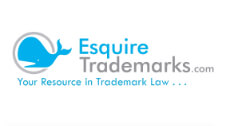Trademark Symbol – ™ vs ®
Trademark ™ – The TM Symbol – The Trademark Symbol
The Trademark symbol (™), “The TM Symbol” is often used on logos, names, phrases, or words. The TM Symbol is used proactively by companies to indicate the mark is their own exclusive property. The Trademark ™ symbol has no legal meaning, but can be used on unregistered marks as a “no trespassing” sign.
The Trademark Office Rules of Procedure state that you may use terms such as “trademark,” “trademark applied for,” “TM” and “SM” regardless of whether a mark is registered. These are not official or statutory symbols of federal registration.
If you are using ™ Symbol , the trademark is most likely not registered. As such, your rights to enforce an unregistered trademark would stem from common law … Common Law Trademark Rights may (or may not) apply depending on whether the mark is proven to be protectable, and proven that you are the owner.

With an unregistered trademark, the burden is on the owner to prove it owns common law rights (ownership and protectability) in the trademark. With a registered trademark the court can presume that you are the owner and that the mark is protectable. See my article entitled Benefits of Trademark Registration for a full discussion of registered trademark rights.

Registered Trademark Symbol ® – The Trademark R Symbol – The R Circle
The registered trade mark symbol ®is statutory notice that the mark is registered with the United States Patent and Trademark Office (USPTO). Use of the ® “Trademark R” entitles the owner to claim profits and damages from a defendant who has infringed your trademark.
The use of the registered trade mark symbol is an indication allowed by law that the trademark is registered with the USPTO. The Trademark R Symbol ® can ONLY be used with the goods and services listed on the registration. The ® “Registered Symbol” can ONLY be used for the trademark displayed on the registration certificate.
How to Provide Notice of a Registered Trademark with the Trademark Symbol
“…a registrant of a mark registered in the Patent and Trademark Office, may give notice that his mark is registered by displaying with the mark the words “Registered in U.S. Patent and Trademark Office” or “Reg. U.S. Pat. & Tm. Off.” or the letter R enclosed in a circle, thus ®”
Consequences of Nonuse of Registered Trade Mark Symbol
Section 29 of the Lanham Act requires “statutory notice” (use of ® — or as described above) in order to claim damages and profits of a registered trademark.
If you do not use the ® Symbol, a Defendant can Claim that you Waived your Right to Financial Damages in a later Lawsuit for Infringement.
“…in any suit for infringement under this Act by such a registrant failing to give such notice of registration, no profits and no damages shall be recovered under the provisions of this Act unless the defendant had actual notice of the registration.”
If you failed to provide statutory notice by using the trade mark symbol, all is not lost. You may still be able to get damages – if you can prove that the defendant had “actual notice” of your registered trademark.
HINT: simply using the Registered Trademark Symbol is much easier and less costly to prove than actual notice.
Consequences of Misuse of the Registered Trade Mark Symbol
The Registered Trade Mark Symbol must not be used in connection with marks not yet federally registered. It must not be used, for example, with marks for which an application to register is still pending.
State trademark registration does not qualify you to use the Trademark R – ® Symbol. TMEP 906
Using the Registered Trademark Symbol on goods or services that are not registered may result in serious repercussions, such as a fraud false advertising claim. It could also result in cancellation of any pending trademark applications that use the registered trade mark symbol. Improper use of the federal registration symbol, ®, that is deliberate and made with intent to deceive or mislead the public or the Trade Mark Office is fraud. Copelands’ Enters. Inc. v. CNV Inc., 945 F.2d 1563 (Fed. Cir. 1991); Wells Fargo & Co. v. Lundeen & Assocs., 20 USPQ2d 1156 (TTAB 1991). IN the Copelands’ case, CNV made allegations of infringement in a cease and desist letter, and claimed in the letter that the mark was registered. CNV also advertised its sunglasses with the registered symbol, when the mark was not. This misuse of the trademark R provided Copelands’ with grounds to cancel the registration for fraud when it did become registered.
However, modern courts have been extremely lenient in accepting explanations for misuse of the statutory notice. For example, the rules state that misunderstandings about use of federal registration symbols are more frequent than occurrences of actual fraudulent intent. Common examples of improper use of the federal registration symbol found not to be fraud include:
- Mistake or confusion as to the requirements for giving notice;
- Incorrectly giving instructions to the printer, or misunderstanding by the printer;
- The mistaken belief that registration in a state or foreign country gives a right to use the registration symbol (Brown Shoe Co. v. Robbins, 90 USPQ2d 1752 (TTAB 2009) ; Du-Dad Lure Co. v. Creme Lure Co., 143 USPQ 358 (TTAB 1964));
- Registration of a portion of the mark (Coca-Cola Co. v. Victor Syrup Corp., 218 F.2d 596);
- Registration of the mark for other goods (Duffy-Mott Co. v. Cumberland Packing Co., 424 F.2d 1095, (C.C.P.A. 1970); Meditron Co. v. Meditronic, Inc., 137 USPQ 157 (TTAB 1963) );
- A recently expired or cancelled registration of the mark ( Rieser Co. v. Munsingwear, Inc., 128 USPQ 452 (TTAB 1961));
- Another mark to which the symbol relates on the same label (S.C. Johnson & Son, Inc. v. Gold Seal Co., 90 USPQ 373 (Comm’r Pats. 1951)).
Some other countries use the registered trade mark Symbol. They include Belgium, China, Costa Rica, Denmark, Ecuador, Germany,Guatemala, Hungary, Luxembourg, Netherlands, Nicaragua, Poland and Sweden. The US Trademark Office Rule 906.01 on the R symbol can be construed to allow use of the registered symbol when the mark is registered in one of the above countries. This fact can be used to mitigate fraud or false advertising claims.
